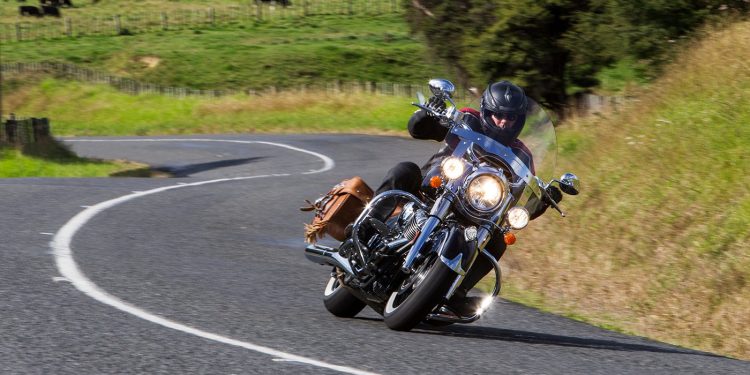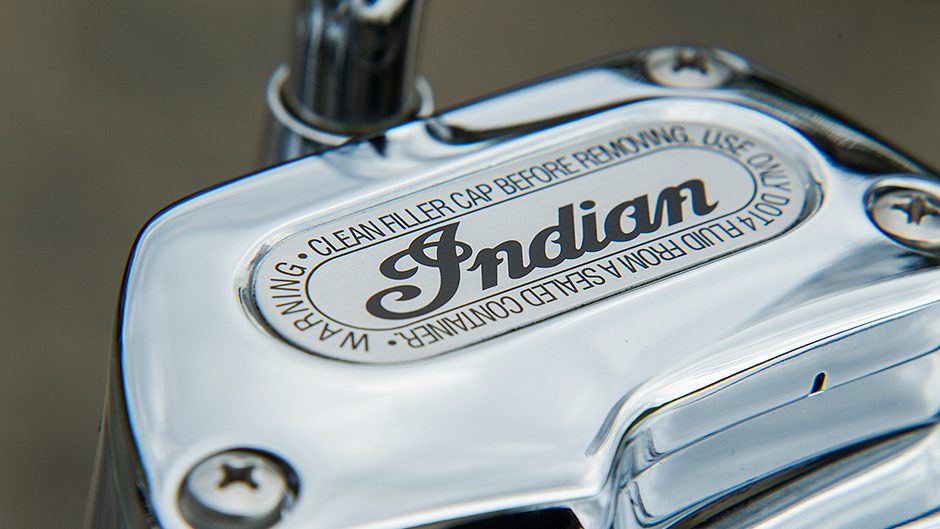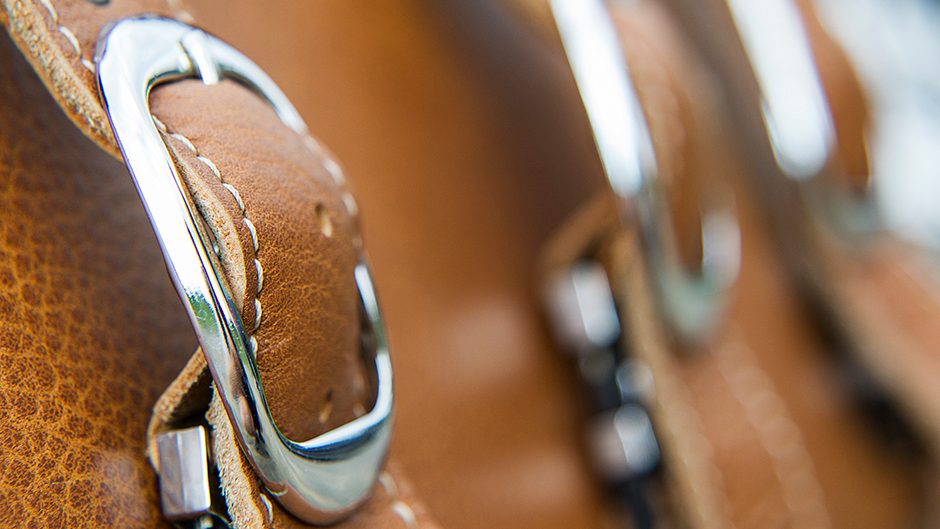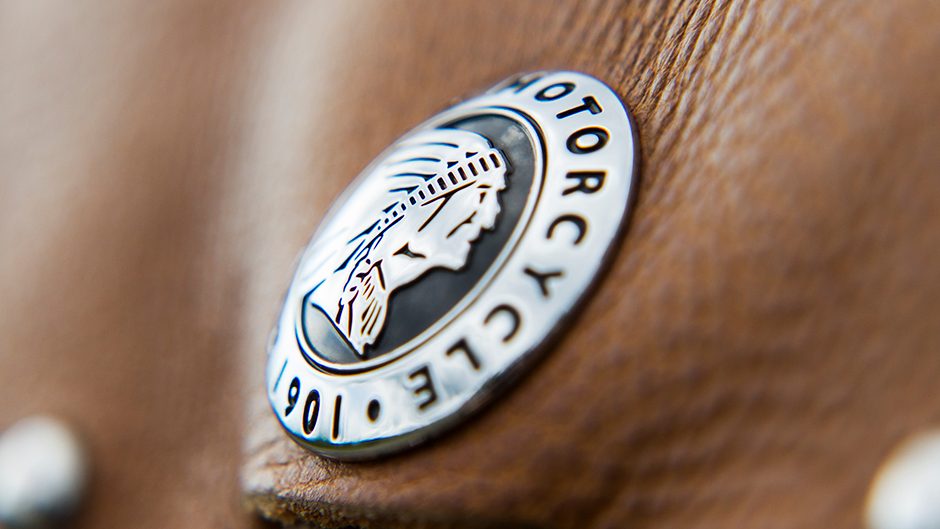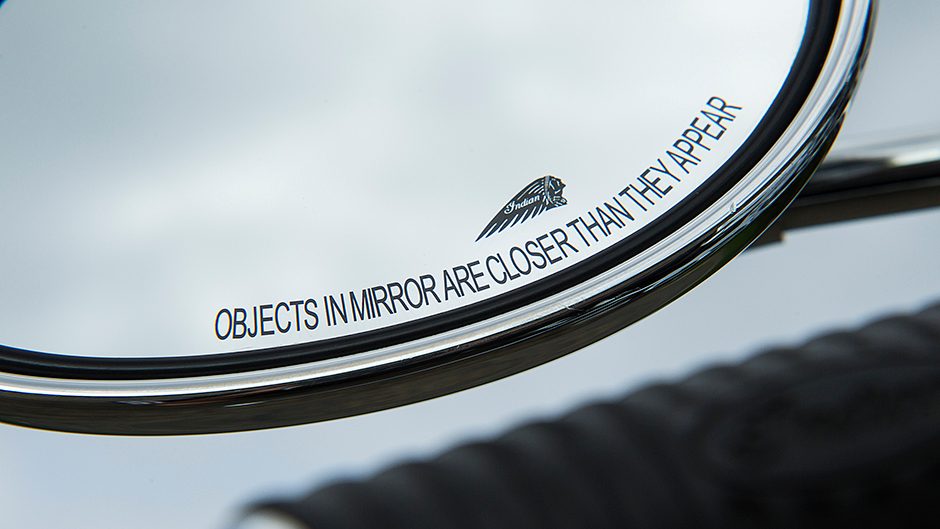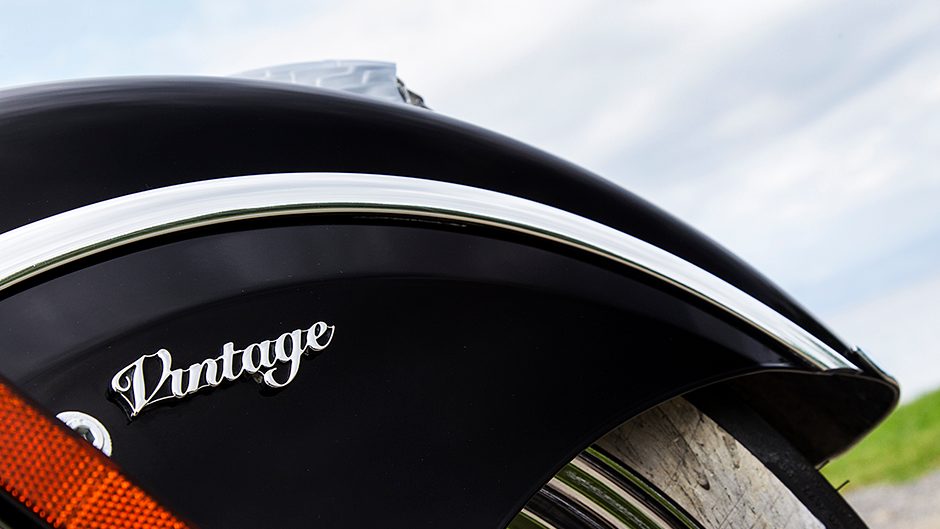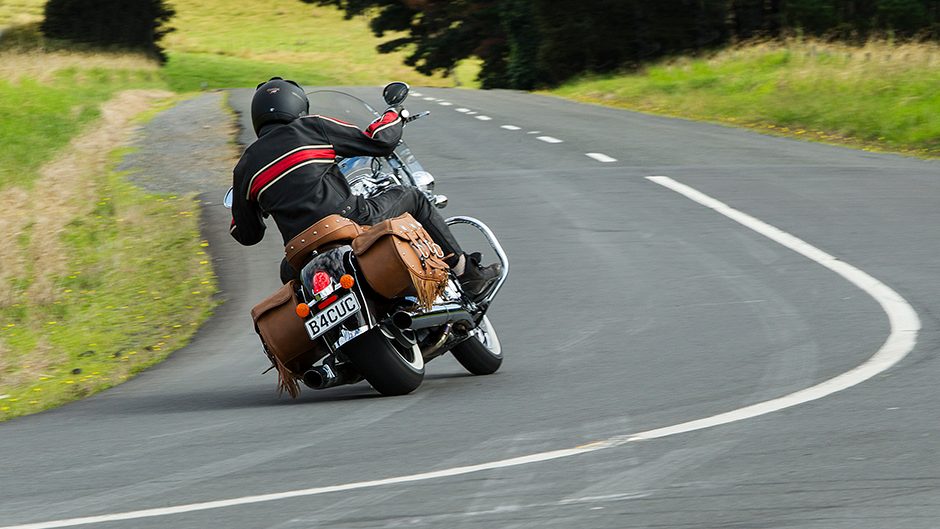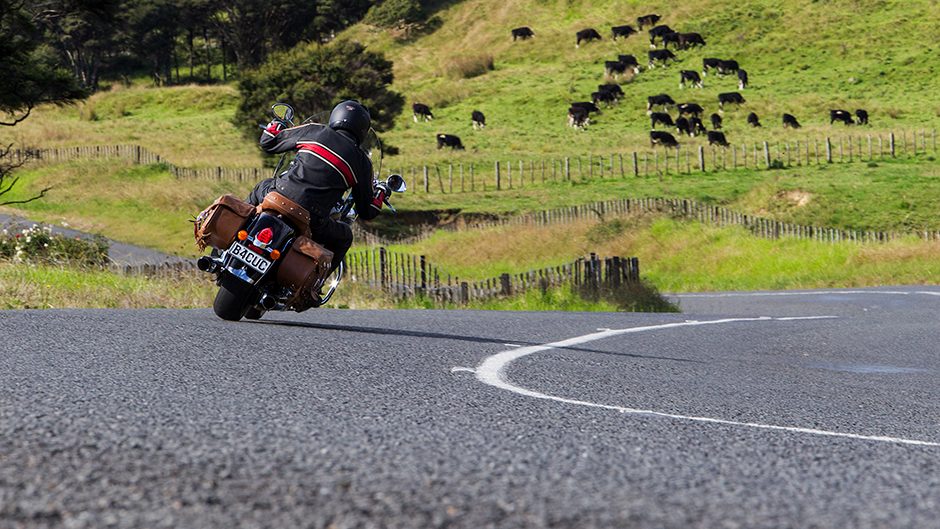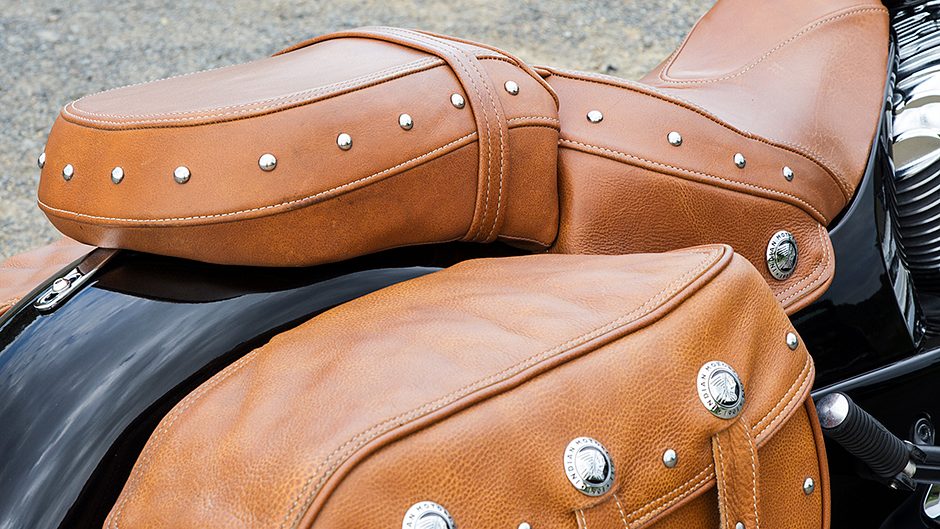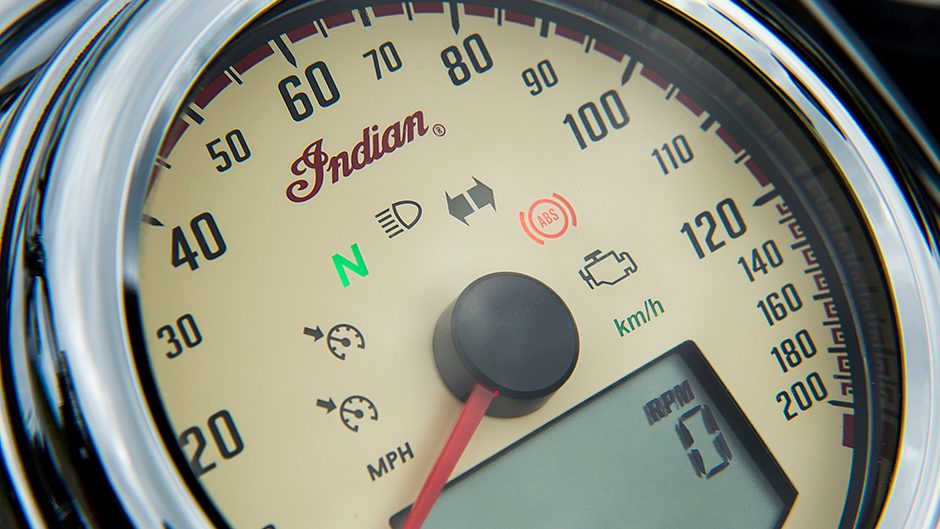2016 Indian Chief Vintage review
Words Peter Louisson | Photos Tom Gasnier
With its big quick-release screen in place, riding the Indian Chief Vintage is like being in a cone of silence. Standard fit includes tassled bags, making the big Indian both a tourer and cruiser double act.
Seldom is how often we ride a motorcycle that almost completely eliminates wind rush, to the point where a visor can be chucked away and no thought given to inserting ear plugs. Mind you the sucking noises from the big air-cooled Thunder Stroke engine that powers the Indian Chief Vintage can get a mite noisy above about 110km/h, but if you’re just cruisin’, no worries.
This is the second bike we’ve had recently that’s black with whitewall tyres and a V-twin engine, but there the similarities to the Guzzi Eldorado begin and end. One’s made in Europe and can tackle the occasional mountain pass, the other in heartland USA where curves in the road are just straights that are shorter. And their air-cooled motors are rather different too, one lugging from stupidly low revs and signing off early, the other from 2000rpm but spinning higher at the top end. They both produce peak torque at roughly 2700rpm, the 1400 Guzzi good for 120Nm, the 1811cc Thunder Stroke (sounds like a terminal medical condition) stumping up with 139Nm. Both sound a little polite ex-factory. More roar is possible with the stage one pipes from Indian, and is accompanied by an ECU reflash, though power and torque are essentially unaltered. There’s a more discernible change to wallet volume.
Arguably the main point of difference between these two cruisers is their weight. The Indian Chief scales up at close to 400kg, whereas the Eldorado is nearer to 300 kaygees. In most situations you can muscle the Eldorado around without the engine going. By contrast, you usually need to fire up the Indian to change its position. That also makes it a more difficult bike to acclimate to, though there’s one other primary difference in that regard; the removable fairing. It has both its up and its downsides, but there’s more of the former.
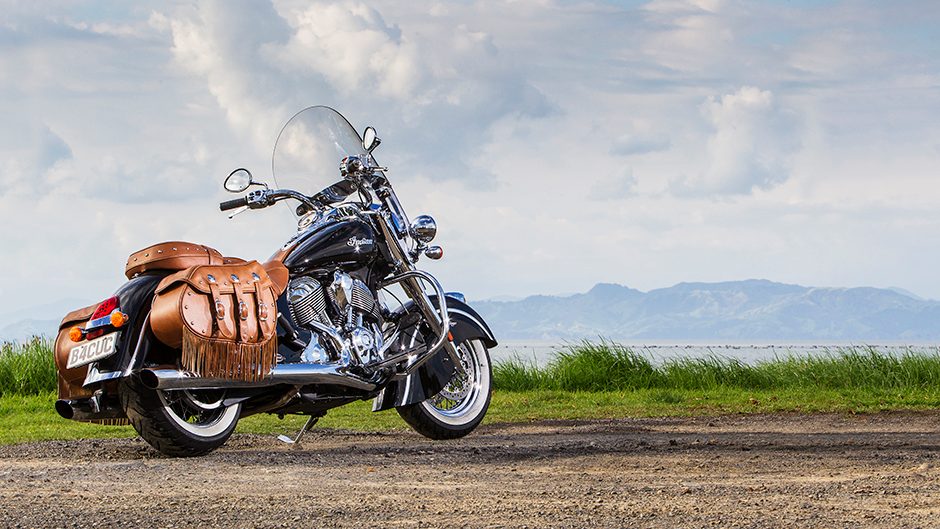
Within a few kilometres of setting out, it’s clear this big bubble of a fairing is a genuine windbreaker. It’s essentially a large circle of Perspex that simply jams the wind out of the way. In terms of aeros we’d guess it doesn’t do a whole lot for Cd or fuel use. But if the weather conditions are stable, you can quickly unclip the screen and leave it in the garage. The bike then for sure turns easier, more naturally; it reminds of the Chief Classic upon which it’s based.
On the other hand, with the screen in place, you can immediately rip off your visor and rip out your earplugs, as neither is needed; it’s rather liberating. You can peer around the outside of the screen in corners but your helmet is completely out of the windblast otherwise, hence the lack of wind noise. We wish we were riding this on the final day of our round-the-Cape by Guzzi jaunt, given I’ve never been wetter on a bike in my life.
So in essence the Indian Chief Vintage is more the cruisy cruiser. It absorbs pretty much any type of road indent ahead and we didn’t once suffer any wincing over short, brutal crash-and-bang bumps. However, the front end isn’t as pinned as the Guzzi’s, and nor is stability as rock solid. There’s not much between them for cornering clearance though the Indian may have a couple more degrees of lean available. Push any further and it grinds the underside of the footboards, whereas the Guzzi’s underpinnings are plastic and designed to be replaced after being worn through.
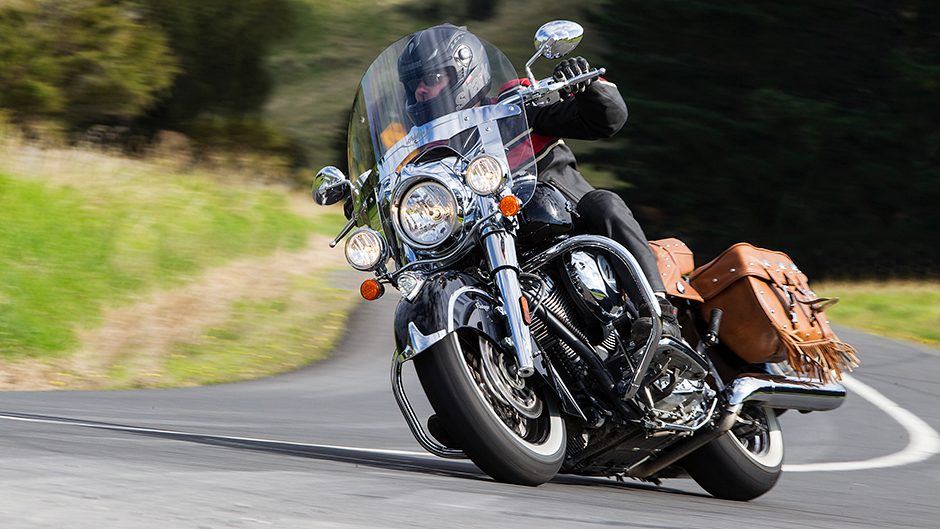
The engines are way different too. If anything the Chief goes better at lower revs than higher. It pulls with grace from just above idle, so you can shortshift as early as 1600rpm for nice crisp gear changes. If you hold the revs higher in the gears, you must pause momentarily after closing the throttle before upshifting. Much the same is true when downshifting; best to throttle blip and then shift to keep things smooth. It’s oh-so satisfying when it’s done right. And the box feels bullet-proof. You don’t even need to look to know when neutral is selected; you can feel it at the lever.
Back to weight though, and despite the fewer cubes (111 vs 84 cubic inches, or 1811 vs 1380cc), the lighter Guzzi is comfortably quicker, its 2.9sec overtaking time comfortably eclipsing the Chief’s 4.25sec effort. And that’s how it feels on road too, more urgent, and better for long distance touring, apart from the lack of a weather-eliminating screen. No heat from the engine either, whereas the big Thunder Stroke mill warms your leathers in winter but might prove a hot stuff proposition in summer.
There are a few design aspects to the Indian that are clearly there to counter its archrival from the US. So the sidestand looks almost interchangeable, and like on myriad Harleys the rev counter is incorporated in the trip computer so is not always that easy to spot at a glance, not that you really need to. It’s not nearly so easy to fathom as the analogue unit of the Guzzi, and nor is the speedo, analogue on the Indian, digital on the Eldorado. It’s easy enough to discern up to about 110 but from there the intervals shrink so when the tacho shows 3000rpm exactly it’s hard to tell whether the bike is doing 130 or 140km/h. Perhaps this is deliberate to keep the rider cruising at legal speeds. On that, 100 uses up just 2250rpm in sixth, one of the highest geared bikes we’ve ridden and at that rate fuel use is around the 5.0L/100km mark. An average of 6.6L/100km was much the same as the Guzzi’s.
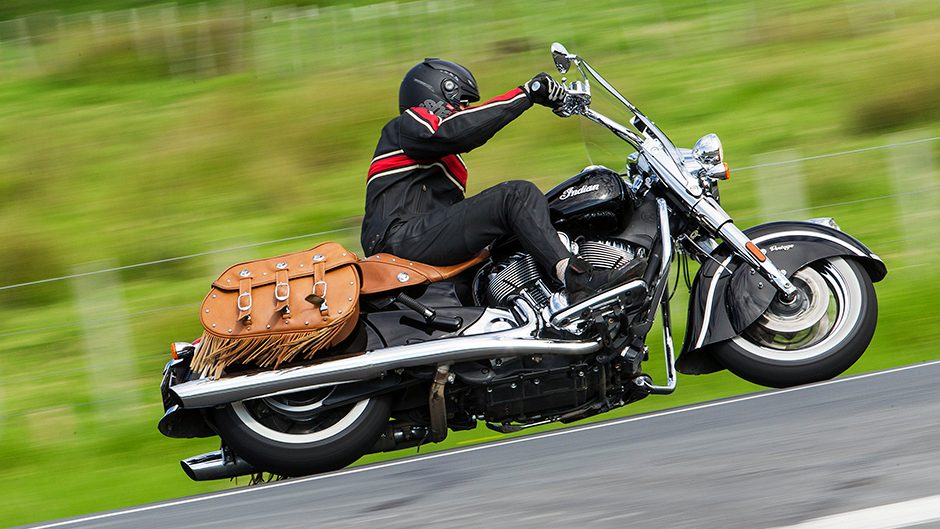
We found the bullhorn handlebars set a touch too high on the Vintage, but that’s easily enough changed. And with that you’ve got one of the plushest riding positions in the cruiser world. The footboards are long and unhindered by the heel upshift mechanism of the Guzzi, which we found was left unused, like cruise control, anyhow. Mention of which, the Vintage Chief also gets cruise on the right switch block, but it’s much easier to use than the discreet but inconvenient system on the Italian bike. Simply hit the ‘on’ button and then thumb the rocker switch alongside to set the speed.
All the Chiefs get keyless start, ABS braking and cruise control, valanced mudguards and tank-mounted instrumentation, while the Vintage model adds riding lights, detachable screen, engine crash bars, leather upholstery for the dual seat (versus vinyl covered single seat), and detachable soft leather saddle bags. The Chief costs $30,795 and the Vintage verion $34,795. If you’re after a solid, stately, well built cruiser with retro looks that’s set up for comfort and can handle long distances as easily as day rides, look no further. Just be aware that it’s amongst the biggest of cruiser machines out there, and takes a bit of acclimatising. But the ability to morph it from touring bagger to a laid back cruiser within minutes is certainly appealing.
| Model | Indian Chief Vintage | Price | $34,795 |
| Engine | 1811cc, air/oil-cooled, fuel injected, V2, n.a.kW/139Nm | Drivetrain | 6-speed, belt final drive |
| 0-100km/h | 5.59sec | 100-0km/h | 37.20m |
| 80-120km/h | 4.25sec (120.7m) | Weight | 392kg |


